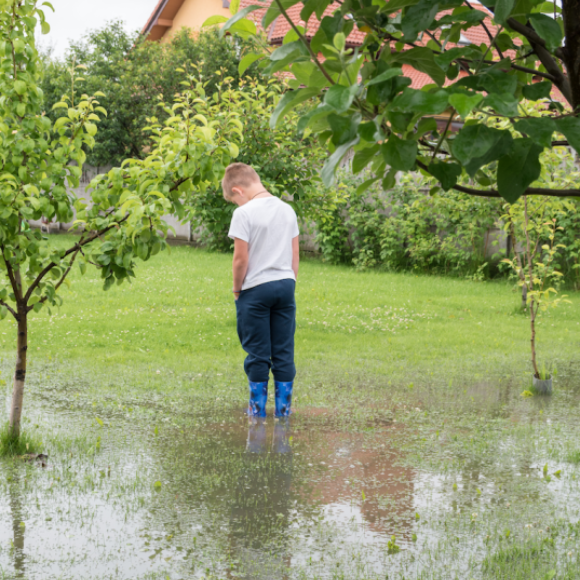
Constant rainfall for much of this year has meant that the eastern seaboard has barely had a chance to dry out before the next drenching; and it is impacting our lawns, gardens and even pot plants.
Even short-term flooding has the potential to cause significant damage to soil and plant root systems. When soil becomes flooded, oxygen – essential for root respiration and soil microbes – is eliminated from the soil. As little as 24 hours of complete immersion can compromise the health of the roots as well as the plants themselves.
Although some plants are more tolerant of waterlogged conditions than others, most can survive being submerged for about a week or so. Even so, the consequent root damage can make them susceptible to a range of pests and diseases and decrease their tolerance to other environmental stresses – including high temperatures and lack of water over the coming months.
Accumulation of sediment or soil can be as damaging as a layer of standing water, by denying the roots of precious oxygen. Likewise, constant heavy falls can cause compaction of the soil in pots, and clogging of drain holes, leading to loss of oxygen and the potential drowning of pot plants.
Before starting any work in the garden, be aware that walking on wet grass can compact the soil and cause damage to the roots and crowns of the plants, so it is best to minimise foot traffic on waterlogged soils.
If possible, allow the soil to drain naturally, thereby avoiding long-term damage to soil structure through compaction. This is a particular problem with heavier soils which tend to compact to a greater degree. Heavy clay soils, for example, will take several days of solid sunshine to dry out to the point where gardening can start.
As a first step in recovering your lawn, carefully remove any debris (glass, metal, stones etc.) that may have accumulated; make sure you’re wearing gloves, strong footwear and appropriate clothing to protect yourself from potentially contaminated soil and sharp debris.
Next, remove top layers of mulch from garden beds and landscaped areas, to allow them to dry out more quickly. This step might seem wasteful, but the mulch is quite possibly soured, anyway – and your garden will be better from the addition of a fresh layer once you have finished cleaning up.
If plant foliage and stems are heavily silted or covered in debris, it is advisable to hose them off gently, taking care not to add too much to the already sodden conditions. Mud or silt can also be gently scraped off plants. Silt covered leaves will affect the plant’s ability to function effectively.
Where there is less than 20mm of sediment on the lawn, it can be spread evenly across the grass surface with a steel rake, to provide a handy top-dressing. The silt layer can easily crust over and prevent air movement, so it is essential to keep it loose and well-aerated through regular raking.
Avoid dragging the rake too deeply as this can damage the underlying turf. Lawns that have greater than 20mm of sediment should have excess silt removed quickly and be kept well-aerated.
If the lawn does not show signs of regeneration within a few weeks, it is time to consider re-establishing the lawn. Before doing so, make sure the dead layer of lawn below is thoroughly broken up and incorporated into the surrounding soil, otherwise it will act as a barrier to new root growth and limit air and water movement. Establishing a new lawn quickly will help guard against soil loss in the next downpour.
Lawns will also greatly benefit from a feed following a flood, helping to replace any lost nutrients and aiding in their rapid regeneration. You might find that weeds, including some from seeds transported in the floods, may establish themselves in your lawn. However, it is best to delay controlling weeds until the lawn is not stressed and it has begun to regrow.
If the task of helping your lawn recover from flooding seems too daunting, contact your local professionals – landscapers, for advice and guidance. They will not only be familiar with the neighbourhood terrain, but they are also knowledgeable about the best products and techniques that will help your garden become more resistant to damage, and more resilient in recovery into the future.

